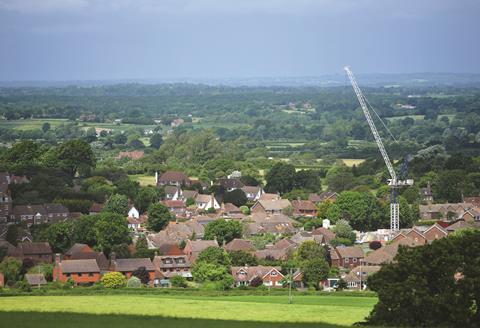Guess which London borough we are talking about. “The largest number of units delivered in any one year (357) equates to 25% of the annual average needed.

Given that performance, and the scale of the shortfall, there is little prospect that the rate of delivery of affordable homes will improve significantly in the short to medium term.
“Alongside that poor level of delivery, affordability in the borough has been getting worse. Lower-quartile private rental rates have increased to almost double the national average, average house prices are 12 times average incomes and the median house price ratio to incomes has increased by 59% since 2011.
“This evidence provides a strong indication that the provision of decent housing for all members of the community is not being given the highest priority, as is claimed in the foreword to the council’s Sustainable Community Strategy.”
This was the planning inspector’s view in his recent decision granting permission for a development on Metropolitan Open Land (MOL) in… the London Borough of Bromley.

The council has consistently failed to produce a sufficient five-year supply of land for housing, but persists in fighting losing battles to stop much-needed homes. For an example of why we need reform of the planning system, look no further.
Although MOL is London’s version of the green belt, the development in question hugely enhances the site by making it publicly accessible for the first time and providing children’s facilities. Developer Overstrand and architect Ian Ritchie have been fighting the council over the development for more than five years, during which other development has taken place on adjacent sites (following successful appeals) next to Lower Sydenham railway station.
I wrote about the proposal in the 2019, after permission was granted on appeal for the same site; the developer then commissioned a fresh design with 100 extra units on the same footprint, which was – natch – refused permission, triggering a second appeal that took place just before Christmas 2020. The Greater London Authority was its usual negative self, making silly suggestions about the application that the inspector dismissed.
Special circumstances
My evidence to the inquiry was about the quality of the design, which is excellent, but I was very much a bit-part player. Detailed design quality is a necessary but not sufficient element in MOL cases. To obtain permission, you must prove that ‘very special circumstances’ outweigh the assumed harm that development implies.
Key elements in this case included the effect on the character and appearance of the site and its surroundings, with particular reference to density, height, scale and massing; the effect on the openness and visual amenity of the MOL; the effect on the living conditions of neighbours and future occupiers; and whether the proposal would make adequate provision for affordable housing in line with national and local planning policy.
The appellant’s case was conducted by Chris Young QC, the numero-uno planning barrister in that sector’s ‘league table’, based on permission secured. Subsequently he has written with some passion about an issue not raised specifically in this Bromley case, but which needs to be considered: who speaks for the people who will benefit from proposed housing developments, particularly the affordable elements? Angry complaints from residents make councillors and planners sit up and take notice, but what about citizens who need somewhere to live?
This chimes with a recent Radio 4 programme where Rory Sutherland, the eminence grise of the advertising industry, noted that predicted ‘loss’ always generates greater noise than the provision of a new benefit. You rarely get a protest group demanding something new on their patch.
Citizens of Buckinghamshire may hate HS2. They may hate the idea of a reformed planning system that gives greater certainty about the location of new housing. This does not mean they are right.
Paul Finch is programme director of the World Architecture Festival






























No comments yet